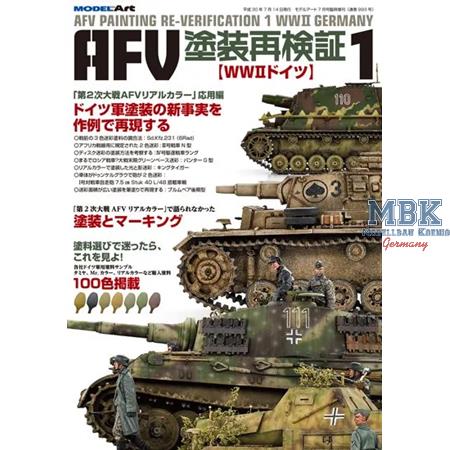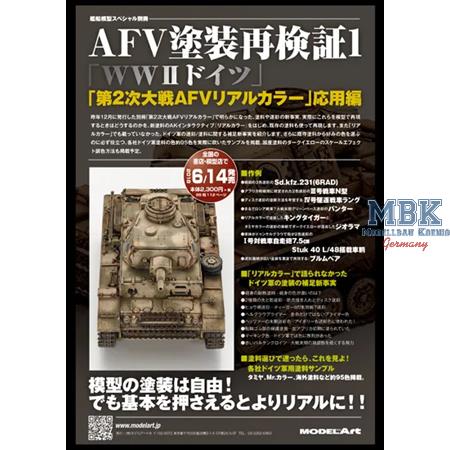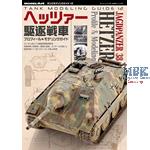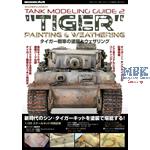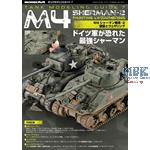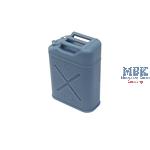AFV Painting Re-Verification 1 WWII Germany
MDA-993
Model Art
"Real Colors of WWII AFV" Advanced Guide
- Includes samples of approximately 90 German military colors from Tamiya, Mr. Color, and international brands.
- B5 size
- 112 full-color pages
- Japanese language
Featured Examples
- Pre-war Three-color Camouflage Recipe: Sd.Kfz.231 (6Rad)
- Two-tone Camouflage for the African Front: Panzer III N model
- Exploring Disc Camouflage Painting Techniques: Jagdpanzer IV L/70
- End-of-war Green-base Camouflage: Panther, resembling Russian tanks
- Diorama Featuring King Tiger Painted with Real Colors and a Vehicle
- Camouflaged with Tamiya Colors, including Dark Yellow
- Dunkelgrau Chassis with Two-tone Camouflage Gun: Panzerjäger I with 7.5 cm StuK 40 L/48
- Brush-painting Large Camouflage Areas: Brummbär
- The dark appearance of gun barrels: discussing heat-resistant paint.
- The use of light grey primer in addition to red primer on armored vehicles.
- Inspection officers checked for correct colors at factories using color charts, especially for three-color camouflage (e.g., Panther tanks).
- Factories employed both sprayed spots and disc camouflage patterns for light and shadow effects.
- Unique colors (e.g., ivory) were used on late-war Czech vehicles like the Hetzer. - Early North African German tanks featured white paint on the rubber parts of road wheels to protect against solar heat.
- Leopard print camouflage was planned for prototype and unfinished vehicles but was only adopted by Henschel's Tiger II, not other factories.
- Although "Real Colors" associates the light and shadow camouflage with late summer to autumn, evidence shows Tiger IIs used it as late as February/March 1945.
- Some markings, such as the Balkenkreuz, were painted red.
Write now your personal experience with this article and help others with their purchase decision.

